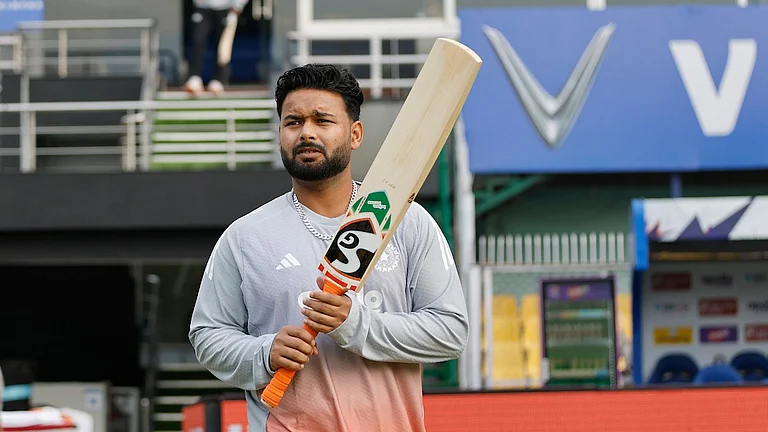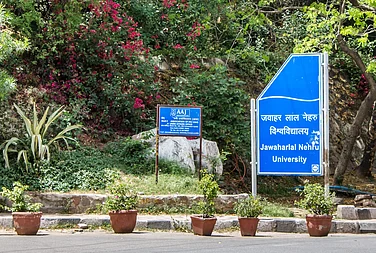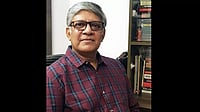In June 2022, the Sri Ram Janmabhoomi Teerth Kshetra Trust responsible for constructing the Ram Mandir in Ayodhya announced they had received Rs 5,500 crore in donations from the public. The sum is about half the Centre’s annual budget for the school midday meal scheme.
In the same month, the Indo-Islamic Cultural Foundation Trust (IICF) appointed by the Utter Pradesh Sunni Central Waqf Board (UPSCWB) to oversee construction of the Ahmadullah Shah mosque (Ayodhya mosque) on the 5-acre allotted plot in Ayodhya’s Dhannipur village, announced it had received only Rs 25 lakhs in donations for the mosque likely to cost around Rs 110 crore, including Rs 100 crore for a hospital.
The IICF in May 2020 had submitted the drawings of the maps of the proposed mosque to the Ayodhya Development Authority for approval. The blueprint is yet awaiting approval, and without a proper layout in hand, the fundraising activities cannot commence in full-swing.
S M Akhtar, Architect of Ahmadullah Shah mosque, remains undeterred. Recently, retired as Professor & Founder Dean Faculty of Architecture & Ekistics, Jamia Millia Islamia, is confident of his design layout fulfils the Ganga-Jamuni tehzeeb (multicultural society) integral to culture of the Awadhi region.
While the allotted land for the mosque is only surrounded by rice fields, and poor housing, health and education facilities, Akhtar believes the mosque complex will drastically improve the lives of citizens residing in the vicinity as it will be constructed on the concept of Khidmat Khalq or Manav Seva—service to humanity. Locals will no longer have to run to Lucknow, Gorakhpur, Benaras for health emergencies. Besides a library, research facility, and community kitchen, a 200/300-bed super speciality hospital will provide medical on the 24,150 sqm land in the complex.
While some traditions will stay, like the Mihrab will face Mecca, and the sahn (courtyard for a large gathering to pray in rows), there is nothing traditional about the Ahmadullah Shah mosque design. On the 30th anniversary of the Babri Masjid demolition on December 6, 1992, SM Akhtar talks about his plans for the new mosque. Edited excerpts:
According to reports, once the design blueprint is approved it will take only a year to build the mosque. Is that possible?
No. This is a big project. It will at least take one-and-half or two years. Mobilisation of funds is another issue. The fund flow will decide the speed.
What is the situation with funding?
Not very encouraging. To procure funds or even register for FRCA (Foreign Contribution Regulation Act), the mosque design must first get approved. That has not happened, so the IICF committee has not started looking for funds.
What was your design motive? In the previous interviews, you said the round shape will imbibe modernity that means breaking away from the past and mirroring the future.
I want to build a complete centre to serve humanity, not just a mosque. I have done that by incorporating ancillary activities like a hospital, health and research centre in the design. Building the super-speciality hospital will cost more than the mosque. With consultation, treatment, advanced medical equipment, the rough estimate is Rs 1 crore per bed. This being a 200-300 bed hospital, you can gauge the overall cost.
Your design unites diverse forms and materials. Some say the globe looks 'cosmic' or that it hints at the qubba (dome).
People have attached different theories and styles to the blueprint, but those were not my thoughts while designing it. A lot of words are in fashion today and used very loosely. I am using contemporary technique, expression/vocabulary, vastly different from the usual perception of a mosque. My design in one word is ‘free flowing’. There are many things at the back your mind; the mind being a hard disc, a backup of all your thoughts collected through life. All those thoughts amalgamated into one thought and was delivered as this design.
The perception is that a building with glass is not a ‘green building’, and its ability to heat up the interiors makes it incompatible to India’s hot weather.
I have demolished such myths and theories in my book titled Islamic Architecture—Perceptions and Paradox. It will give you an idea of my idea behind the mosque design. The perception that glass is fragile, not sustainable or not suitable in extreme heat is wrong. Enough R&D has gone into manufacturing diverse kinds of glass. It is one of the toughest materials. In European countries, bus shelters and cages for tigers and lions, are made from glass. The life of glass can go beyond 100 years; durability being the first parameter of sustainability. The versatile material can resist heat, withstand any weather, much like the glass dome on Norman Foster’s Reichtag building in Berlin (that symbolises the reunification of Germany). Glass domes will catch on in India. After all, the globe is one family.
‘The globe is one family’ also applies to the glass globe of the Ahmadullah Shah mosque
You can say that.
The new mosque will be four times bigger than the original Babri Masjid. Do you think the Supreme Court verdict on the Ram Janmabhoomi case was fair?
I am not in the position to comment on this.
A whisper at Babri Masjid’s Mihrab was audible 200ft [60m] away. In an earlier interview, you said what lime, mortar brick, and conductivity could do, concrete—your material of choice, back then—can do something new. Can we expect similar acoustics at the new structure?
Only the mosque design is frozen. The treatment and the material will be worked on whatever is available at the time of execution. In the two years after creating the design, lots of new materials have come up. Concrete would have been irrelevant today had I stuck to it. Acoustics might happen to an extent, because of the structural shape. A lot of voice will re-travel, so installing an audio system might not be needed. Might be supplementary, but not essential.
And the mosque will be energy efficient.
The mosque tap a lot of solar and wind energy, and aim at zero carbon footprint. Like Karnataka’s Badriya Jum’a Masjid, a zero-energy intake mosque that produces energy via solar and windmills.
It is said the community kitchen centre will serve Awadhi dishes such as ‘gosht-roti’, tehri, puri-sabzi, and such from Lucknow to Faizabad and Jaunpur to Banaras. Will the community kitchen centre have any design element to assist that implementation?
The community kitchen is the brain child of [academic, food critic, historian] Professor Pushpesh Pant from Jawaharlal Nehru University (JNU). I have no idea about his plans. I just know that the concept could be similar to langar served at gurdwaras. Masses have to be served, not only the elite. The cuisine he is talking about is only for the elites. I am concerned with the masses.
Any design elements one must take into account on a visit to the mosque?
Take note of the functionality, for what purpose it was made. It’s the reason why a hand tool, shirt, briefcase…any functional element, stays around for ages. Then, looking at new challenges, that were not ‘concerns’ 50 years ago. Equal access to changing parameters for the aged, physically challenged, women, etc., so all spaces are accessible for all, and no one feels discriminated. Those concerns are addressed through wheelchair ramps, elevators, different ablution areas for women.
Were you involved in naming the mosque after Ahmadullah Shah?
No. Suggesting a name was not my domain. But I agree, he was a great warrior, notable for starting the Revolt of 1857. Very interesting story about his death, you must read it up. [The British had put Rs 50,000 pieces of silver on Ahmadullah's head, but the warrior kept travelling across Awadh, mobilising people against the imperialists. On June 5, 1858, when he reached Powayan Raja Jagannath Singh’s palace, he was betrayed. A rain of bullets killed him. Singh beheaded him and presented the head to the British to prove his loyalty.]
Any other projects in hand?
No more architectural projects, as I just want to write books on subjects like urban planning. I can’t disclose much, but something on the lines of if someone were to ask me ‘why is there urban mess in India?’ I’ll say, we our methods of town planning are wrong, irrelevant to the times. That’s not the answer people want to hear.

























